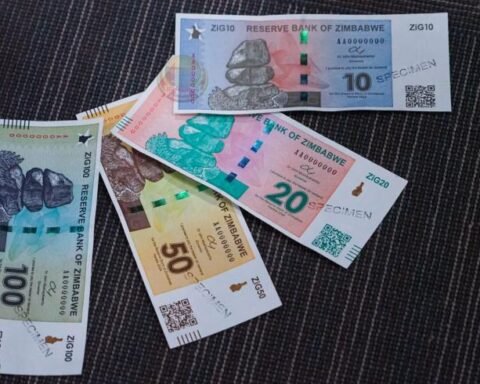Zimbabwe’s latest endeavour to stabilize its currency market involved introducing the ZiG, a gold-backed currency, on April 8. Despite initial turbulence, the ZiG exhibited signs of resilience, gaining 0.2% against the US dollar on its second day of trading. Governor John Mushayavanhu led the Reserve Bank of Zimbabwe in spearheading this initiative, emphasizing a shift towards a functional local currency. The ZiG’s debut exchange rate of 13.56 per US dollar slightly improved to 13.53, indicating a nascent but positive trajectory.
This move follows the recent demise of the Zimbabwean dollar, which experienced relentless devaluation before being discarded on April 5. The new currency, relies on 2,522 kilograms of gold and approximately $100 million in foreign currency reserves held by the central bank.
However, many sectors faced arduous transitions to the ZiG. Banks, retailers, and utilities struggled with system adjustments to accommodate the new unit, disrupting nationwide commerce. Despite government directives urging adoption, challenges persisted. Initially, only a third of financial institutions connected to the ZimSwitch national payments platform could process ZiG transactions.
The Zimbabwe Electricity Supply Authority advised customers to continue payments in US dollars until the transition was complete, reflecting broader uncertainty. Even government services experienced interruptions, with the Foreign Affairs ministry temporarily halting document authentication due to ATM disruptions during the currency switch.
Businesses had until April 12 to fully integrate ZiG into their electronic systems. Notably, the Zimbabwe Stock Exchange swiftly adopted the new currency, though trading volumes remained subdued on its debut day.
Despite the initial challenges, ZiG performed well, gaining 0.2% against the US dollar on its second day of trading. The success of ZiG hinges on market confidence, as underscored by IH Securities. Given Zimbabwe’s significant reliance on the US dollar before ZiG’s introduction, sustaining trust in the new currency remains paramount for economic stability.
While ZiG’s official trading marked a step forward, challenges persist. Many retailers and banks were still configuring their systems to accommodate ZiG transactions, causing widespread reluctance to accept the currency. The Zimbabwe Stock Exchange and major mobile money platforms began supporting ZiG transactions, albeit amid reservations about its long-term viability.
Analysts and commentators express mixed sentiments regarding ZiG’s prospects. While some view it as a necessary overhaul of the monetary system, others remain skeptical about its ability to address underlying credibility issues. Bloomberg columnist Lionel Laurent cautioned against excessive optimism, citing historical precedents and the challenges inherent in backing a currency with gold.
The road ahead for ZiG remains uncertain, with its success contingent upon addressing systemic challenges and restoring market confidence in Zimbabwe’s economic policies.








